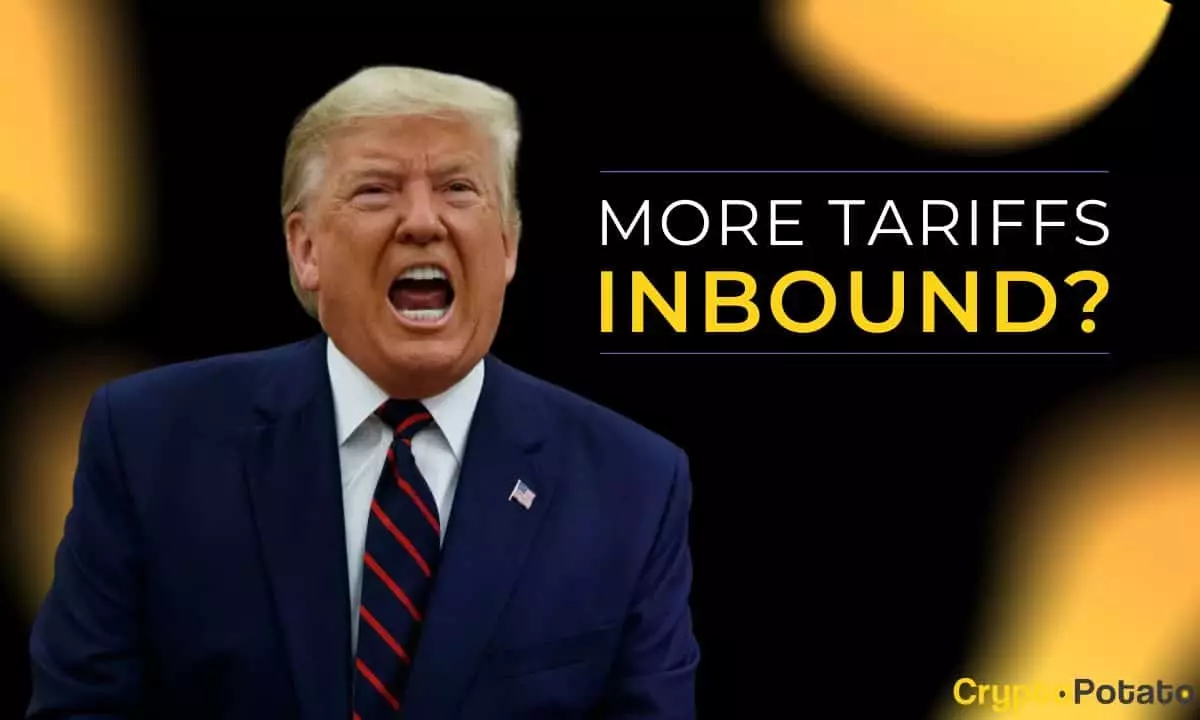The recent announcement by U.S. President Donald Trump regarding the imposition of retaliatory tariffs marks a critical juncture in international trade dynamics. While supporters laud the decision as a bold step toward correcting perceived economic injustices, the reality is far more complex and troubling. The tariffication strategy — deploying sweeping levies on a multitude of countries — reveals not just a lack of foresight but also poses significant risks to global stability and economic health. It is essential to critically analyze these developments through a lens of center-right liberalism, as they threaten to upend the free market principles on which many economies depend.
The Immediate Financial Fallout
In the wake of Trump’s tariff announcement, market reactions were swift and decisive—stock indices around the globe saw significant declines, wiping out over $5 trillion in market capitalization in merely a week. Such a drastic market reaction serves as a compelling reminder of the interconnected nature of today’s economies. While some may consider this volatility a temporary hurdle, it is indicative of deeper structural weaknesses that could unravel at the slightest provocation. The S&P 500’s plunge exceeding 6% is just a symptom of a larger malaise, revealing investors’ palpable anxiety about the threats of prolonged trade disruptions and retaliatory measures from other nations.
The current wave of panic in financial markets underlines an important principle: economic policy should prioritize stability over aggression. Retaliatory tariffs may aim to correct trade imbalances, but the collateral damage to investor confidence gives strong reason to reconsider this approach.
International Relations and Diplomatic Strain
Layered on top of the immediate economic impacts are the diplomatic tensions that such tariffs cultivate. Countries like China and those in the European Union are likely to respond not only with their own tariffs but with broader strategic moves that may undermine U.S. influence globally. China’s swift retaliation, slapping its own 34% tariffs on U.S. products, perfectly encapsulates how a seemingly isolated decision can set off a chain reaction of diplomatic fallout. Such relationships, often built on decades of mutual benefit, risk descending into a state of hostility that may not only affect trade but also long-term geopolitical alliances.
The rhetoric coming from these nations, branding the U.S. as a bully violating international norms, diminishes American soft power. This aspect of the fallout cannot be understated; by positioning itself as a combative player in trade discussions, the U.S. risks becoming isolated as countries rally against these perceived injustices.
The Long-term Economic Risks
While the administration may frame these tariffs as short-term solutions to a trade deficit, the long-term economic risks are far more pronounced. Economists and analysts are already warning that tariffs function as a double-edged sword, potentially leading to increased prices for consumers and strained relationships with key trading partners. The economic ambiguity surrounding this strategy diminishes the possibility for thoughtful, sustainable growth. This is not a time for bluster; it requires diplomacy, economic acumen, and a strategic vision that extends beyond immediate electoral gains.
Moreover, the statistics related to international trade underscore the complexity of these economic relationships. The risk is that such tariffs may not merely reset balances but, rather, lock nations into a cycle of retaliation that could lead to greater economic collapse on a global scale.
The Crypto Correlation and Market Speculation
One fascinating aspect of this crisis is the peculiar behavior of cryptocurrency, particularly Bitcoin, in relation to traditional stocks amidst the downturn. Where conventional markets tumbled, Bitcoin showed a surprising degree of stability, dipping merely 0.3% over the same week. This trend raises critical questions about the future of decentralized currencies in a world increasingly characterized by governmental intervention in financial markets.
While some experts hint that this divergence may signal a new era of investment strategies, the reality is also sobering. Cryptocurrencies, often lauded for their potential to democratize finance, may not be immune to the systemic issues affecting all financial assets. Thus, while Bitcoin’s current detachment from traditional market behavior is intriguing, it must not breed complacency; caution is warranted.
A Call for Pragmatism
In the realm of economic policymaking, the imperative for pragmatic solutions cannot be understated. The current administration’s approach to tariffs, while provocative, lacks a nuanced appreciation for the complex interplay of global markets. As debates surround trade policy and retaliations unfold, the time for rational discourse is critical—not just for American economic interests but for the health of the global economy. Moving beyond mere rhetoric is essential; a collective vision rooted in cooperation and mutual benefit is what will foster resilience in economic policies.


Leave a Reply